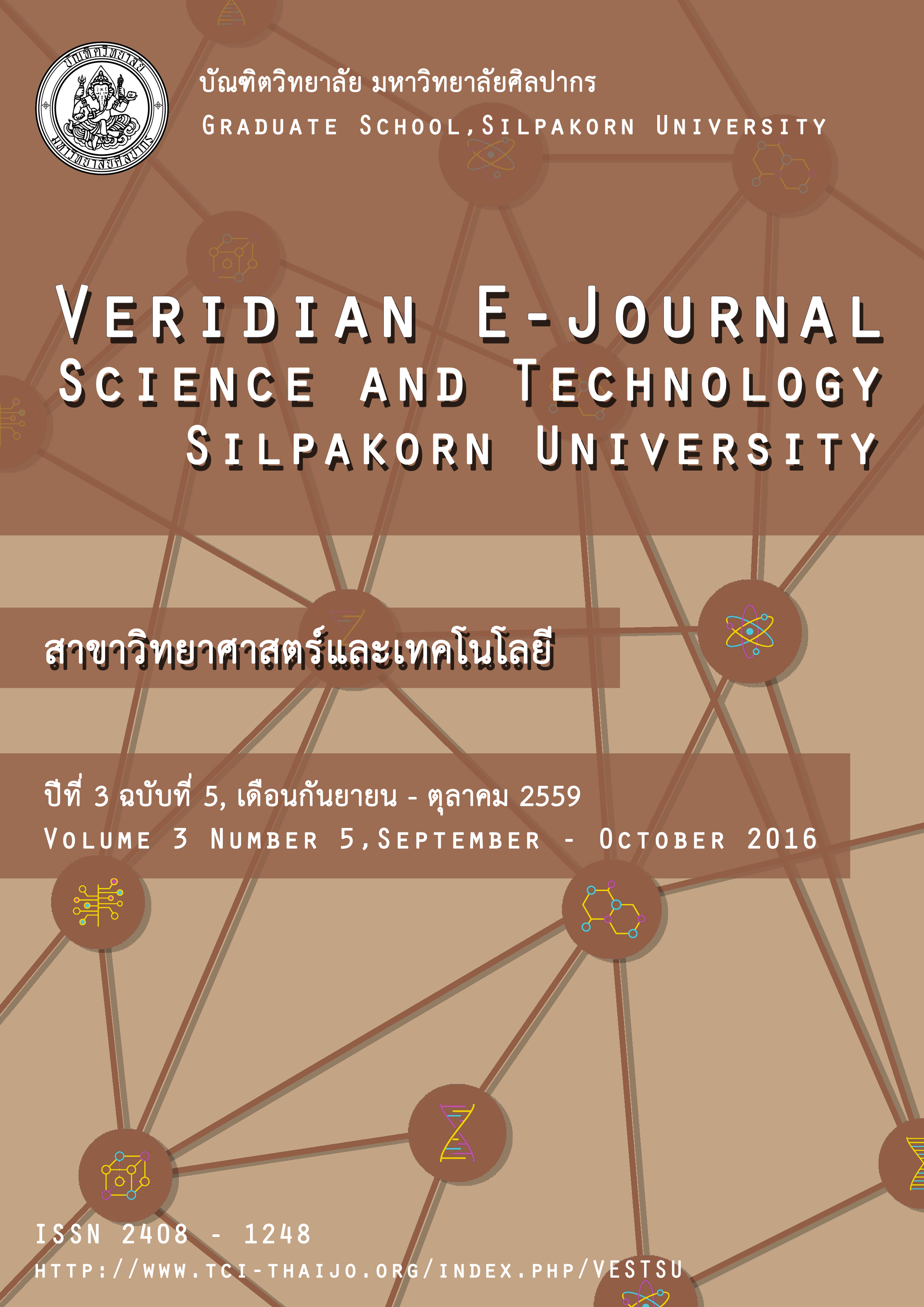การเตรียมตัวเร่งปฏิกิริยาทองคำขาว บนตัวรองรับท่อนาโนคาร์บอน เพื่อใช้เป็นขั้วไฟฟ้าแคโทดสำหรับเซลล์เชื้อเพลิงจุลชีพ
Main Article Content
Abstract
เซลล์เชื้อเพลิงจุลชีพ (Microbial fuel cell; MFC) เป็นเทคโนโลยีที่สามารถเปลี่ยนความสกปรกในน้ำเสีย และผลิตกระแสไฟฟ้าได้ในเวลาเดียวกัน โดยใช้แบคทีเรียที่อยู่ในน้ำเสียเป็นตัวเร่งปฏิกิริยาทางชีวภาพ เพื่อเปลี่ยนสารอินทรีย์ให้กลายเป็นคาร์บอนไดออกไซด์ น้ำ และพลังงาน สำหรับส่วนประกอบต่างๆในเซลล์เชื้อเพลิงจุลชีพนั้น วัสดุที่ใช้ในการเตรียมขั้วไฟฟ้าแคโทด และตัวเร่งปฏิกิริยาที่ขั้วไฟฟ้าแคโทด ซึ่งมีบทบาทสำคัญในการผลิตกระแสไฟฟ้า และในการเร่งปฏิกิริยารีดักชันของออกซิเจน ในงานวิจัย นี้ ได้ทำการศึกษาโดยใช้ตัวเร่งปฏิกิริยาทองคำขาว (Pt catalysts) บนท่อนาโนคาร์บอนแบบผนังเดี่ยว ที่มีหมู่ฟังก์ชันเป็นคาร์บอกซิล (SWCNTs-COOH)เป็นตัวรองรับ โดยเตรียมขึ้นด้วยวิธีการตกผลึกควบคู่กับการยึดเกาะ (Deposition precipitation; DP) โดยมีผ้าคาร์บอน (Carbon cloth) เป็นวัสดุขั้วไฟฟ้าแคโทด ผลการทดลองพบว่า สภาวะที่เหมาะสมในการเตรียม Pt/SWCNTs-COOH ได้แก่ สภาวะที่สารแขวนลอยมี pH เท่ากับ 7 และ Reaction temperature เท่ากับ 80 oC และจากการศึกษาคุณสมบัติทางด้านโครงสร้าง และด้านลักษณะทางสัณฐานวิทยา ด้วยกล้องจุลทรรศน์อิเล็กตรอนแบบส่องผ่าน และกล้องจุลทรรศน์อิเล็กตรอนแบบส่องกราดชนิดฟิลด์อิมิสชันร่วมกับเครื่องเอกซ์เรย์แบบพลังงานกระจายพบว่า วิธี DP ให้ Pt catalysts ที่มีขนาดเล็ก และสม่ำเสมอ นอกจากนี้ยังเป็นวิธีที่ง่าย ราคาถูก และมีประสิทธิภาพสูง
Microbial fuel cell (MFC) is a technology for renewable energy recovery from wastewater by biologically treating wastewater and generating electricity at the same time. MFCs use bacteria present in the wastewater as biocatalysts to directly convert organic matter to carbon dioxide, water and energy. Cathode material and catalyst used in MFC play important roles in electricity generation and in improvement of oxygen reduction reaction (ORR). In this study, Pt catalysts on single-walled carbon nanotubes with carboxyl group (Pt/SWCNTs-COOH) were prepared by deposition precipitation (DP) method and used carbon cloth as cathode material. The results showed that the optimum condition for DP were at pH 7 and reaction temperature 80 oC. In addition, the structure and morphology of Pt/SWCNTs-COOH were characterized by transmission electron microscope (TEM) and field emission scanning electron microscope coupled with energy dispersive x-ray (FESEM-EDX). As results, Pt catalysts prepared on SWCNTs-COOH by DP method exhibited small size and highly uniform. Moreover, this method is simple, cost-effective and high efficiency.

